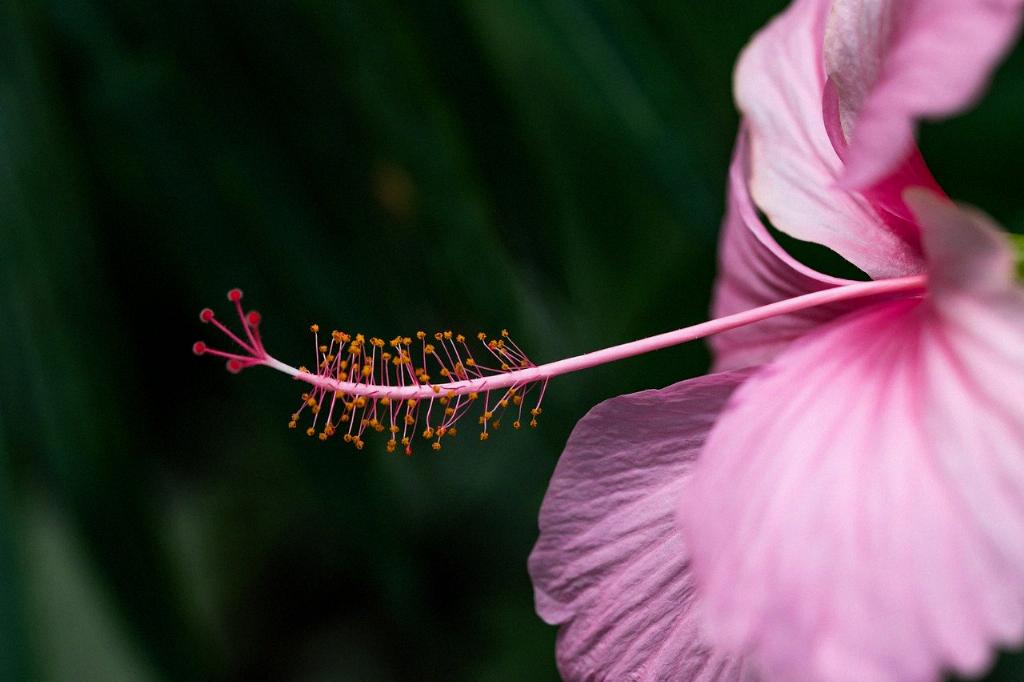Are you frustrated by the lack of blooms on your hibiscus plant? You’re not alone! Many gardeners face this dilemma at some point in their hibiscus-growing journey. While hibiscus plants are known for their vibrant and stunning flowers, there are a few common reasons why your hibiscus may not be blooming as expected.
Insufficient Sunlight
One of the main reasons why your hibiscus may not be blooming is insufficient sunlight. Hibiscus plants thrive in full sun, meaning they require at least 6-8 hours of direct sunlight daily to produce abundant blooms. If your hibiscus is not receiving enough sunlight, it may prioritize foliage growth over flower production, leading to a lack of blooms.
Lack of Proper Nutrition
Another common cause of hibiscus plants not blooming is a lack of proper nutrition, specifically potassium. Potassium is essential for flower development in hibiscus plants. If your hibiscus is not receiving an adequate amount of potassium, it may struggle to produce flowers. Consider using a fertilizer specifically formulated for blooming plants to ensure your hibiscus is getting the nutrients it needs.
Improper Pruning
Improper pruning practices can also contribute to a hibiscus plant not blooming. While pruning is essential for maintaining the health and shape of your plant, cutting back hibiscus branches at the wrong time or too aggressively can remove flower buds and hinder blooming. Be sure to prune your hibiscus plant correctly to encourage healthy growth and abundant blooms.
Overwatering or Underwatering
Both overwatering and underwatering can negatively impact the blooming of hibiscus plants. Overwatering can lead to root rot and nutrient deficiencies, while underwatering can cause stress and inhibit flower production. It’s crucial to establish a consistent watering routine and ensure your hibiscus plant is receiving the right amount of water for optimal blooming.
Rootbound Conditions
Rootbound conditions, where the roots of your hibiscus plant outgrow its container, can also prevent blooming. Rootbound plants may struggle to absorb nutrients and water, leading to stunted growth and a lack of flowers. Repotting your hibiscus into a larger container or pruning the roots can help alleviate rootbound conditions and promote blooming.
Pest Infestations
Pest infestations, such as aphids or spider mites, can stress hibiscus plants and disrupt their blooming cycle. These pests feed on plant sap and can weaken the overall health of your hibiscus, making it difficult for the plant to produce flowers. Regular inspection and treatment for pests can help ensure your hibiscus remains healthy and blooms beautifully.
Temperature Extremes
Extreme temperatures, both hot and cold, can impact the blooming of hibiscus plants. Hibiscus plants prefer warm temperatures between 65-85°F and may struggle to bloom in excessively hot or cold conditions. Protecting your hibiscus from temperature extremes and providing a stable, mild climate can encourage blooming throughout the growing season.
Seasonal Factors
Seasonal changes can also affect the blooming of hibiscus plants. While hibiscus plants are known for their prolific blooming during the warmer months, they may naturally slow down or cease blooming during the cooler seasons. Understanding the seasonal blooming patterns of your hibiscus can help you anticipate when to expect abundant flowers and when blooming may be reduced.
Genetic Factors
Genetic factors can play a role in the blooming habits of hibiscus plants. Some hibiscus varieties may naturally bloom more profusely than others, depending on their genetic makeup. If you’ve tried addressing common blooming issues and your hibiscus still isn’t producing flowers, it may be worth considering the genetic characteristics of your plant and its blooming tendencies.
Stress Factors
Stress factors, such as transplant shock, environmental changes, or physical damage, can impact the blooming of hibiscus plants. Sudden changes in growing conditions or disturbances to the plant’s roots or foliage can trigger stress responses that divert energy away from flower production. Minimizing stress factors and providing a stable, nurturing environment can help your hibiscus plant focus on blooming.

Patience and Care
Remember, blooming issues with hibiscus plants often require patience and consistent care to resolve. By addressing potential causes such as sunlight, nutrition, pruning, watering, pests, temperature, seasonality, genetics, and stress factors, you can help support your hibiscus in blooming beautifully. With proper attention and nurturing, your hibiscus plant may soon reward you with a stunning display of vibrant flowers.
